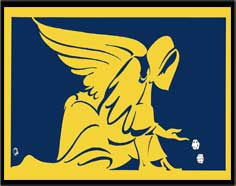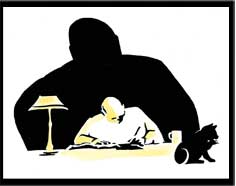Involving only relatively minor criminal figures, the 1974 violence represented a bit of underworld housekeeping aimed at the elimination of one particularly unruly figure who refused to subordinate himself to syndicate discipline; the young John Stuart Regan. A standover collector known for his near-pathological violence, Regan, twenty-nine, was an independent operator who made a substantial income from a variety of activities which included collections from some fifty prostitutes, real estate frauds and some SP and casino stand-over collections.
At about 6 p.m. on 22 September 1974, Regan was crossing the street to enter an illegal casino at Chapel Street, Marrickville when he was ambushed by one or more gunmen who fired eight slugs into his body, leaving him to die in the middle of the street. All theories about Regan’s execution have attempted to explain it in terms of a specific motive: Regan had offended the police, had killed an SP bookmaker close to a ‘Mr Big’, or was collecting stand-over from a syndicate casino. Regan was, in fact, doing all of these things and was trying to establish himself as an independent force. But in so doing, Regan threatened the interests of the city’s dominant organized crime groups which had emerged from the violence of the 1960s. John Stuart Regan was bad for business and was consequently eliminated.
A brief review of some of Regan’s activities in the months before his death reveals how his empire-building threatened established syndicates. Beginning in 1973, Regan expanded his standover collections far beyond his established tributaries among Darlinghurst’s prostitutes. Of greater significance Regan was reportedly making standover demands from the city’s major illegal casinos, particularly the luxurious 33 Club.
Aside from his normal criminal activities, Regan was involved in a rather unusual organization for someone of his background — the ‘Independent Action Group for a Better Police Force’. Several days after Regan’s death his mother, Mrs Clare Regan of Kensington, told the Sunday Mirror: ‘My son was killed because of his activities with the vigilantes’ campaign to fight crime and corruption in the police force’. One of the Committee’s letters to the N.S.W. Police Commissioner charged that ‘a person known as _____ for some time has allegedly been carrying out actions which are contrary to the law and involving financial payments to police and other officials in high circles for the purposes of protection’. Another Committee letter to police read: ‘It has come to the attention of our Committee that the disco known as _____ is allegedly one of the main breeding grounds for drug addiction for young persons’. Both corrupt senior police and powerful syndicate leaders would have found Regan a threat to business, and, not surprisingly, he was executed.
For those police and politicians sympathetic to the idea that there is no organized crime in New South Wales, the relative quiet of the 1970s was proof positive that the criminals were under control. But the calm was extremely deceptive. For, as one syndicate associate put it in 1979, ‘we’ve got so much control we haven’t had to kill anybody for five years’. After the demise of power brokers like Richard Reilly, ‘psychos’ like Ducky O’Connor and independents like John Regan, there was nobody left to challenge the authority of the dominant syndicates. Once order returned to the milieu after the killings of 1967-8, Sydney’s surviving syndicates were free to promote a range of new enterprises that augmented their collective strength — illegal casinos, licensed club frauds, and modernized SP bookmaking.
The decade following the 1967-8 gang wars was one of the most remarkable in Sydney’s history. Sydney became the last of the big, bad cities. Under the tolerant gaze of a laissez-faire State government, Sydney was the centre for all the major vice trades and her syndicate leaders prospered as never before. Thousands of American soldiers on leave from Vietnam attracted legions of prostitutes and escort girls, SP betting boomed, and a network of lavish illegal casinos became the focal point of the city’s glittering night life. The gems in the city’s crown of vice, the best casinos were lavishly decorated and managed with a flair that made them the equal of Europe’s finest. There was only one difference — Europe’s were licensed and Sydney’s were completely illegal. No city in the world could rival Sydney’s tolerance for organized crime.
The momentary upsurge in underworld violence accompanying John Regan’s brief bid for power was an exception to the general calm which pervaded the Sydney milieu in the 1970s. The Sydney milieu now had ‘powers’ who would have to be obeyed. Those unwilling to accept the new order were reluctant to challenge it openly, and a number of vice traders quit the milieu altogether. The death and effective retirement of so many leading Sydney personalities had the effect of centralizing authority within the underworld, and imposed something of a syndicate hierarchy upon what had been a rather loosely structured milieu. While these shifts in underworld power were important, their consequences would have been limited if the State’s political climate had not been particularly sympathetic to an understanding with organized crime. During the eleven years from 1965 to 1976, with the Liberal-Country Parties in power, the State endured a period of political and police corruption unparalleled in its modern history.
While the Labor Party machine, with its close links to working-class communities, was traditionally sympathetic to vice traders like SP bookmakers and sly grog merchants, the complex and bureaucratic structure of the Labor Party made it impossible for any one group to gain an effective monopoly over police and political protection. With the election of the Liberal-Country Parties to power in 1965, however, old understandings collapsed and it was now possible for a small group to rise out of the ruck through superior contacts with police and politicians.
If the precise causation is open to debate, the effect is beyond dispute. Beginning as a loose collection of standover merchants and baccarat gamblers in the mid-1960s, organized crime emerged in the late 1970s as one of the largest industries in New South Wales. Summing up the 1976-7 statistics on the major vice trades reveals a total estimated turnover of $2,219 million, a vast cash flow by any standard — SP bookmaking. ($1,420 million), illegal casino gambling ($650 million), poker machine ‘skimming’ ($90 million), and narcotics ($59 million). With casino bribe payments to senior police and politicians running to some $1.4 million per annum, organized crime was, by the late 1970s, an enterprise capable of wielding considerable influence in New South Wales.
from Drug Traffic by Alfred McCoy





